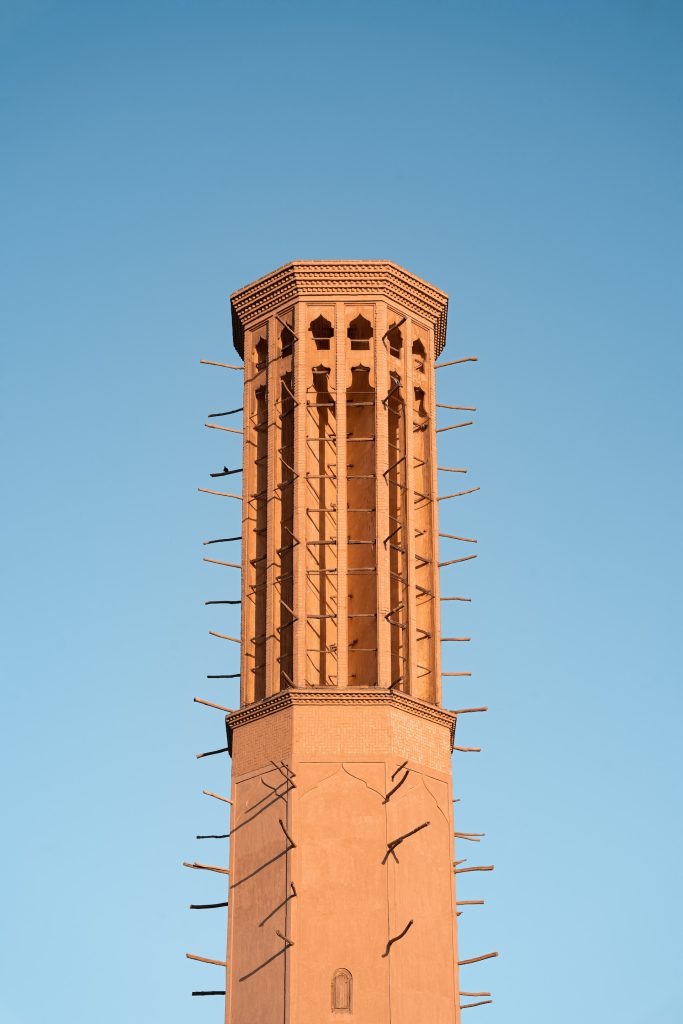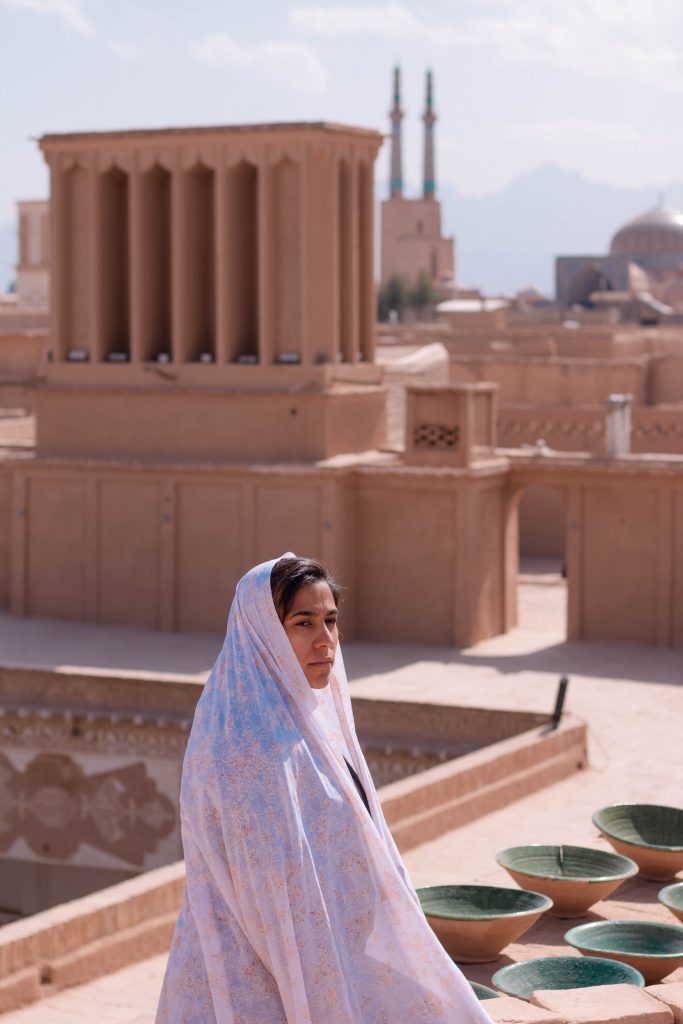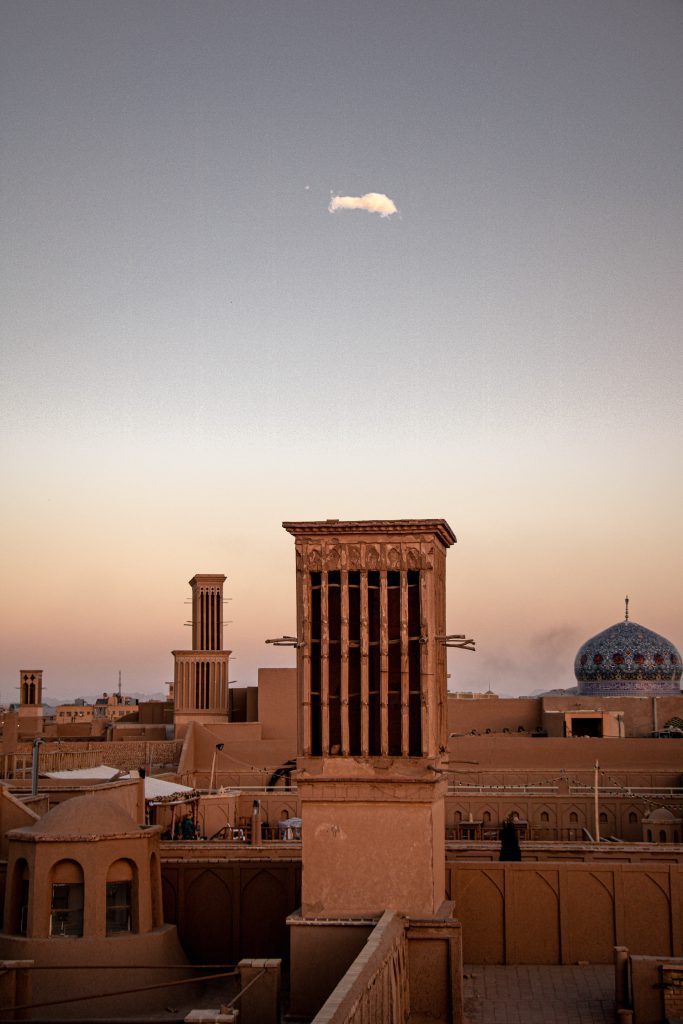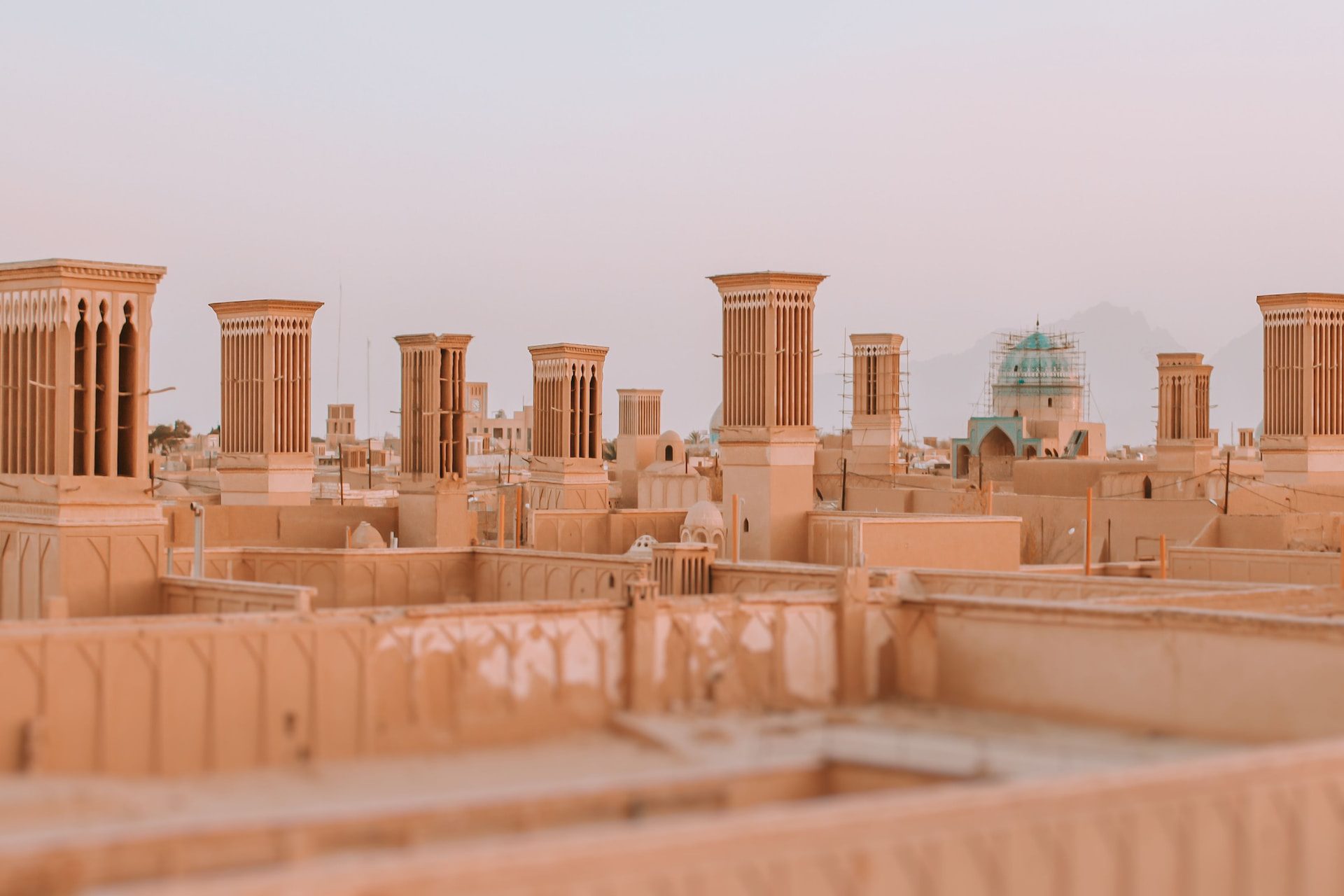The city of Yazd in Iran is known for its unique architecture, particularly its use of wind catchers or “Badgir” in Persian. These structures are a testament to the ingenuity of ancient civilizations in harnessing the power of the wind to cool and ventilate their homes and buildings. In this blog post, we will explore the history and design of wind catchers and their continued relevance in modern times.
What are wind catchers?
Wind catchers are tall, chimney-like structures that are designed to capture and direct the flow of wind into buildings. They are typically made of brick or mud and have a series of vertical vanes or slats that catch the wind and funnel it down into the building. The wind passes over a pool of water, which cools and humidifies the air before it enters the building.
Why were they used in ancient times?
Wind catchers were first used in ancient Persia, where the hot and dry climate made it difficult to keep buildings cool. They were particularly popular in the city of Yazd, which is located in the middle of the desert and experiences extreme temperatures. The wind catchers allowed people to live and work comfortably in the hot desert climate, and they became an integral part of the city’s architecture.

Significance of Wind Catchers in Yazd
Today, wind catchers continue to be an important part of Yazd’s cultural heritage. They are a popular tourist attraction and are often featured in photographs and postcards of the city. In addition to their cultural significance, wind catchers also have practical applications in modern times. They are still used to cool and ventilate buildings in hot and dry climates, and their sustainable design has made them popular among environmentally conscious architects and builders.
Design and Functionality of Wind Catchers
Wind catchers work on the principle of natural ventilation, which uses the power of wind to cool and ventilate buildings. The vertical vanes or slats on the wind catcher are positioned to face the direction of the prevailing wind. When the wind blows, it creates a low-pressure area on the side of the wind catcher facing the wind. This low-pressure area draws air up from the building and out through the top of the wind catcher, creating a natural flow of air that cools and ventilates the building.
What are the different types of wind catchers?
There are several types of wind catchers, each with its own design and functionality. The most common type is the “uni-directional” wind catcher, which is designed to capture wind from one direction. This type of wind catcher is typically used on the roofs of buildings and can be found on traditional homes, mosques, and other buildings in Yazd.
Another type of wind catcher is the “multi-directional” wind catcher, which can capture wind from multiple directions. This type of wind catcher is typically larger and more complex than the uni-directional wind catcher and is often used in larger buildings such as public baths and caravanserais.

What are their benefits?
The benefits of wind catchers are numerous. They provide a natural and sustainable way to cool and ventilate buildings, reducing the need for air conditioning and other mechanical cooling systems. They also provide a source of natural light and can improve indoor air quality by circulating fresh air through the building.
What is the current state of wind catchers in Yazd?
Despite their cultural and historical significance, many wind catchers in Yazd have fallen into disrepair in recent years. The use of modern cooling systems has reduced the demand for wind catchers, and many have been demolished or left to decay. However, in recent years, there has been a renewed interest in preserving and restoring wind catchers in Yazd and other parts of Iran.
What steps are being taken to preserve them?
Several organizations and initiatives have been established to preserve and promote wind catchers. The UNESCO World Heritage Site program has recognized the importance of wind catchers and has included several sites in Yazd on its list of protected sites. The Iranian government has also established regulations to protect wind catchers and has provided funding for restoration projects.
The future of wind catchers looks bright. As more people become aware of the benefits of natural ventilation and sustainable building practices, wind catchers are likely to become more popular in both residential and commercial buildings. In addition, the continued preservation and restoration of wind catchers will ensure that this unique and important part of Iran’s cultural heritage is not lost to future generations.

Frequently Asked Questions about Wind Catchers
How do wind catchers compare to modern air conditioning?
While modern air conditioning is effective at cooling buildings, it requires a significant amount of energy to operate, which can be expensive and environmentally damaging. Wind catchers, on the other hand, use natural wind to cool and ventilate buildings without any external energy input. This makes them a more sustainable and eco-friendly option for cooling buildings.
Are wind catchers only used in hot and dry climates?
Wind catchers are most commonly used in hot and dry climates where cooling and ventilation are necessary to maintain a comfortable living or working environment. However, they can also be used in other climates where natural ventilation is beneficial, such as in humid or polluted environments.
How do wind catchers affect energy efficiency?
Wind catchers can significantly improve energy efficiency by reducing the need for mechanical cooling systems, which require a significant amount of energy to operate. In addition, wind catchers can be designed to work in conjunction with other passive cooling and ventilation strategies, such as shading and insulation, to further improve energy efficiency.
Can wind catchers be used in modern building designs?
Absolutely! Wind catchers are a versatile and adaptable design feature that can be incorporated into modern building designs. They can be customized to suit the needs and requirements of a particular building, and their sustainable design makes them an attractive option for environmentally conscious architects and builders.
Traveling to Iran to Experience the Best of Iranian Historical Places
If you are interested in traveling to Iran to experience the best of Iranian historical places, it is recommended to plan your trip with a knowledge-based and tailored tour. Customized tours allow you to explore the country’s many attractions in a way that suits your interests and preferences, ensuring that you get the most out of your experience.
Iran is home to a wealth of historical and cultural attractions, from ancient ruins and beautiful mosques to stunning natural landscapes and vibrant cities. Iran tours and travel packages can be tailored to suit a range of interests, from history and culture to food and adventure.
If you’re planning a trip to Iran and want to ensure that you have the best possible experience, it’s a good idea to work with a professional tour company that specializes in Iran tours. One such company is ToIranTour, which offers a range of tours designed to showcase the best of Iran’s historical and cultural attractions.
ToIranTour’s Iran tours are designed with the traveler in mind, taking into account individual preferences and interests to create a customized experience. Their team of experienced guides and tour planners work closely with clients to design a tour plan that meets their needs and exceeds their expectations.
Whether you’re interested in exploring ancient ruins, discovering Iran’s rich cultural heritage, or simply experiencing the country’s stunning landscapes, ToIranTour can help you create a customized tour that will allow you to make the most of your time in Iran.
